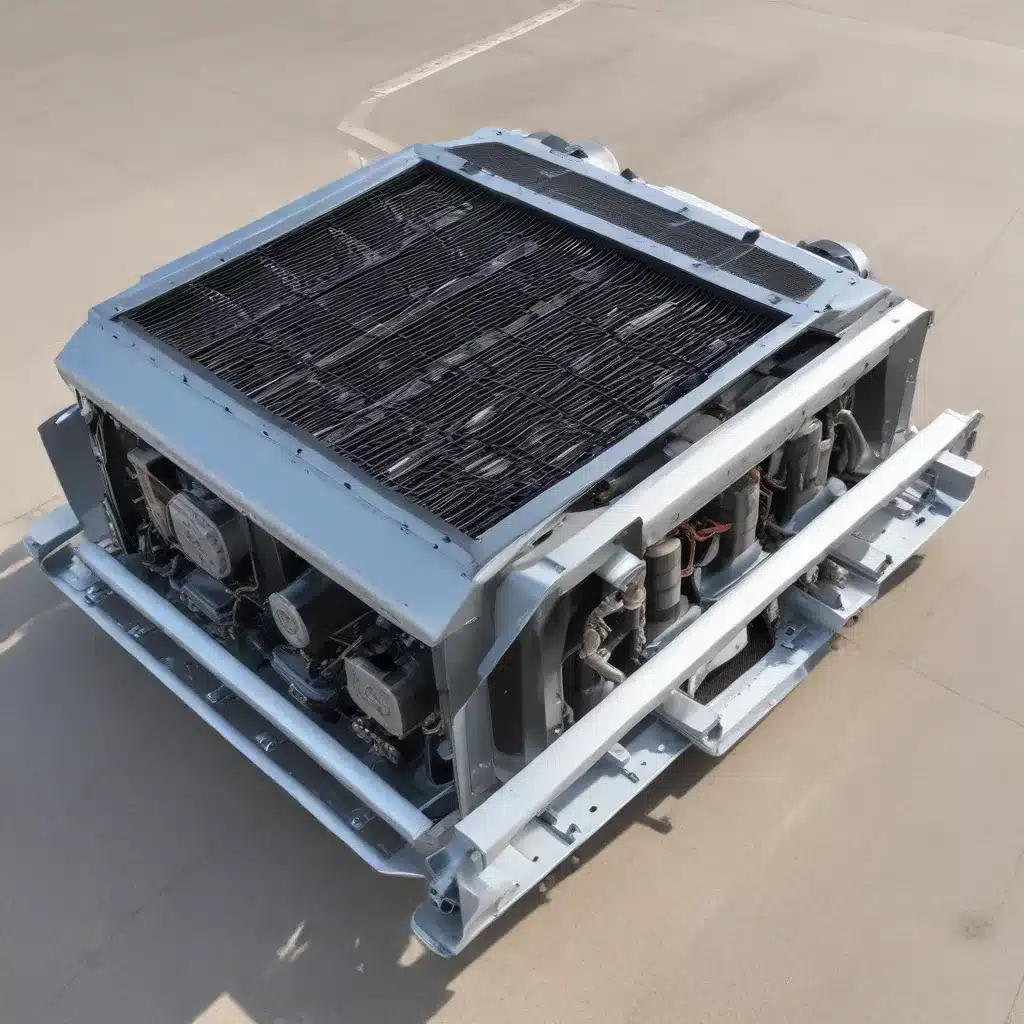
The Evolving Landscape of Electric Vehicle Thermal Management
As the world accelerates towards a more sustainable future, the electric vehicle (EV) industry has emerged as a driving force, revolutionizing the way we power our transportation. At the heart of this transformation lies the critical challenge of effective thermal management – a challenge that air-cooled heat exchanger technologies are uniquely positioned to address.
In the dynamic landscape of electric vehicles, the efficient dissipation of heat generated by high-power components, such as batteries, motors, and power electronics, is paramount. These advanced systems produce substantial amounts of waste heat that, if not properly managed, can compromise performance, reduce reliability, and even pose safety risks. This is where the expertise of air-cooled heat exchanger specialists comes into play, offering innovative solutions to enhance the thermal management capabilities of electric vehicles.
Optimizing Thermal Performance with Cutting-Edge Air-Cooled Solutions
As the EV industry continues to push the boundaries of performance and efficiency, air-cooled heat exchanger technologies have emerged as a versatile and cost-effective approach to thermal management. These advanced systems leverage the principles of convective heat transfer, utilizing air as the primary cooling medium, to effectively dissipate heat from critical components.
One of the key advantages of air-cooled heat exchangers in the EV context is their inherent lightweight and compact design. In the highly constrained environments of electric vehicles, where every gram of weight and every inch of space matter, these heat exchanger solutions offer a strategic advantage. By optimizing the internal geometries and employing innovative manufacturing techniques, such as additive manufacturing, air-cooled heat exchangers can be tailored to fit seamlessly into the vehicle’s architecture, maximizing cooling performance while minimizing the overall system footprint.
Enhancing Efficiency through Advanced Cooling Strategies
The importance of efficient cooling in electric vehicles cannot be overstated. Optimal thermal management not only safeguards the longevity and reliability of critical components but also plays a crucial role in enhancing the overall energy efficiency of the vehicle. Advanced air-cooled heat exchanger technologies are at the forefront of this quest for improved efficiency.
One innovative approach is the integration of complex internal geometries, such as fins, pins, and gyroid structures, within the heat exchanger design. These intricate features, enabled by advanced manufacturing techniques, increase the surface area for heat transfer, allowing for more effective dissipation of waste heat. Additionally, the strategic placement and optimization of these internal structures can promote turbulent flow, enhancing the convective heat transfer and ensuring that the coolant is distributed efficiently throughout the system.
Furthermore, the use of computational fluid dynamics (CFD) simulations has become an invaluable tool in the design and optimization of air-cooled heat exchangers for electric vehicles. These advanced modeling techniques allow engineers to visualize and analyze the complex fluid flow and heat transfer dynamics within the heat exchanger, enabling them to fine-tune the design for maximum performance and efficiency.
Maintaining Peak Performance through Proactive Maintenance
Keeping electric vehicles running at their best requires a comprehensive approach to maintenance, and air-cooled heat exchanger systems play a crucial role in this process. As these components work tirelessly to dissipate the heat generated by EV powertrains, regular inspection and maintenance are essential to ensure their continued optimal performance.
One of the key maintenance considerations for air-cooled heat exchangers is the cleanliness of the cooling air path. Over time, dust, debris, and other environmental contaminants can accumulate on the heat exchanger surfaces, reducing their thermal transfer efficiency. Regular cleaning and inspection of the heat exchanger fins and airflow channels can help maintain the system’s heat dissipation capabilities, preserving the overall thermal management performance of the electric vehicle.
In addition to physical maintenance, monitoring the performance of the air-cooled heat exchanger through data-driven approaches can provide valuable insights. By integrating sensors and leveraging advanced analytics, EV owners and maintenance teams can track key parameters, such as air temperature, pressure drop, and heat exchanger effectiveness, enabling proactive maintenance and early detection of any potential issues.
Versatile Applications across the Electric Vehicle Ecosystem
The versatility of air-cooled heat exchanger technologies extends far beyond the electric vehicle itself, finding applications across the broader EV ecosystem. From charging infrastructure to ancillary systems, these advanced cooling solutions are playing a pivotal role in ensuring the reliable and efficient operation of the entire electric mobility landscape.
In the realm of EV charging stations, air-cooled heat exchangers are essential for managing the heat generated by high-power charging systems. As the demand for faster charging speeds continues to grow, these heat exchanger technologies are instrumental in maintaining the performance and safety of charging infrastructure, preventing thermal overloads and ensuring a seamless charging experience for EV owners.
Moreover, air-cooled heat exchangers are finding applications in supporting systems, such as battery management and thermal regulation for battery packs. By effectively dissipating the heat generated by these critical components, air-cooled solutions contribute to the overall longevity, reliability, and performance of the entire EV powertrain.
Embracing the Future of Sustainable Mobility
As the world continues its pursuit of a more sustainable future, the electric vehicle industry stands as a beacon of progress. At the heart of this transformation, air-cooled heat exchanger technologies are playing a pivotal role, empowering the efficient thermal management of electric vehicles and their supporting infrastructure.
Through innovative design, advanced manufacturing techniques, and data-driven maintenance strategies, air-cooled heat exchanger specialists are pushing the boundaries of what’s possible in the realm of electric mobility. By continuously enhancing the thermal management capabilities of EVs, these experts are helping to unlock new levels of performance, efficiency, and reliability – paving the way for a future where sustainable transportation is the norm, not the exception.
Ultimately, the advancements in air-cooled heat exchanger technologies are not just about improving the individual components of electric vehicles; they are about shaping the broader landscape of sustainable mobility, empowering a cleaner, more efficient, and more reliable transportation ecosystem for generations to come.

